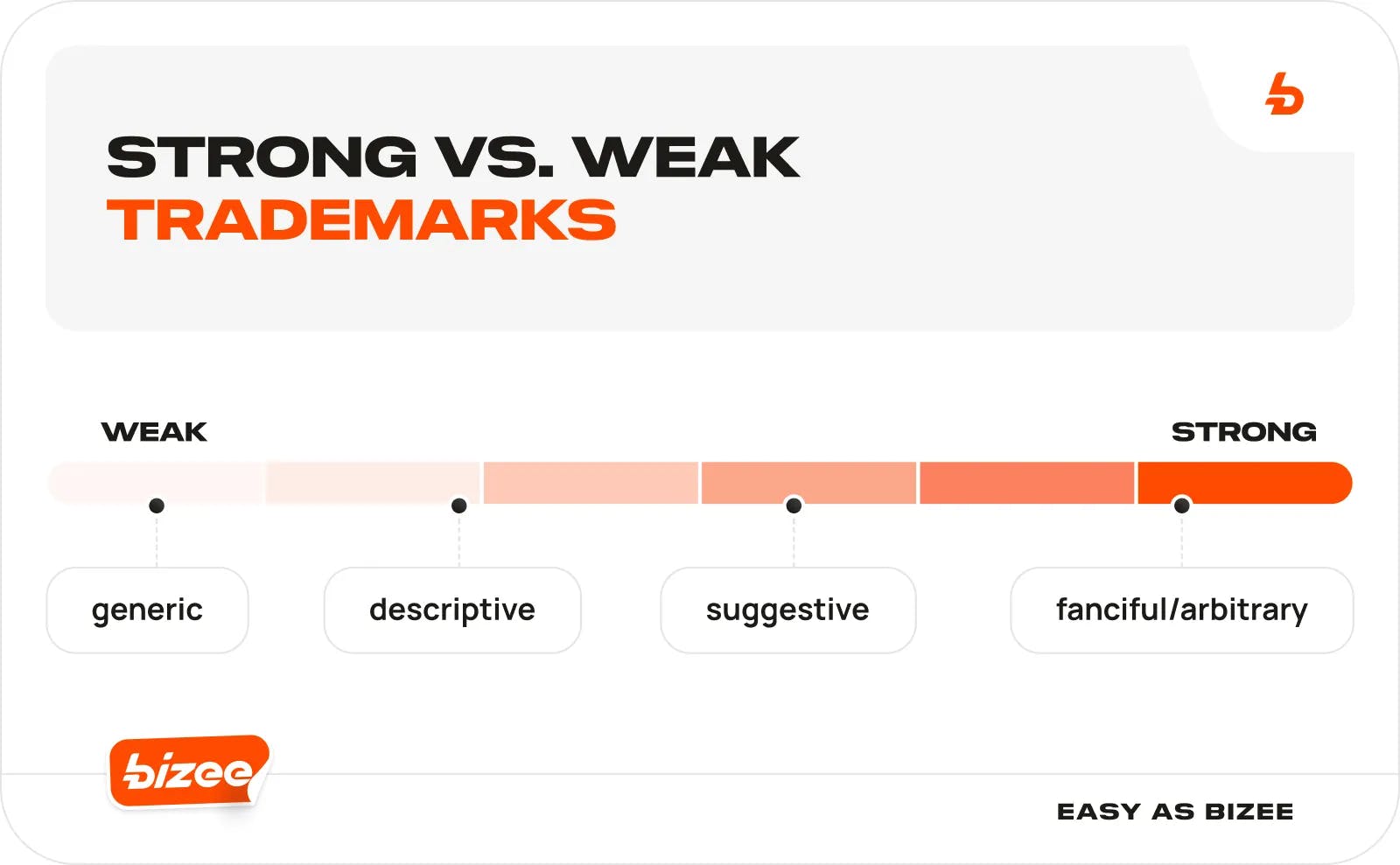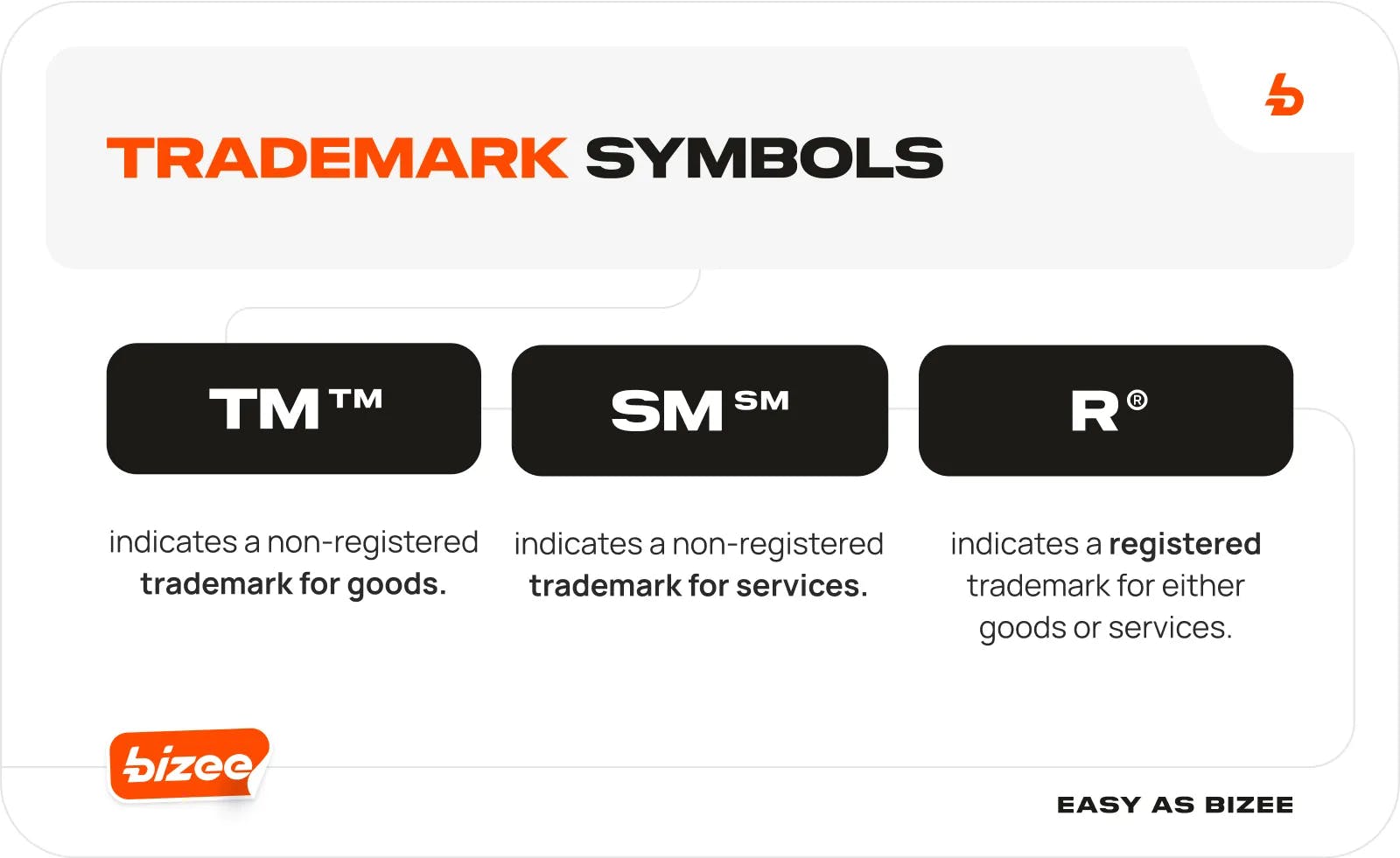W hether you have a digital business, run your small business from home, or are juggling multiple side hustles, there are plenty of scenarios in which you might want to file a trademark.
But how do you go about getting a trademark, and prevent your trademark from being rejected? Consider this your ultimate guide.
Trademark Registration: Protect Your Business Name and Brand
Imagine the Cost of Not Doing it!
Protect Your Business Now

1. Determine If a Trademark Is Right for You
First things first — is it even worth your time filing for a trademark to begin with? To find out, you need to know what can and cannot be trademarked . For instance, things that can be trademarked include:
- Brand names
- Product names
- Phrases and slogans
- Symbols and logos
- Fictional characters
- Distinctive colors, shapes and sounds
- Combinations of any of the above
On the other hand, things that cannot be trademarked include:
- Generic words and phrases
- Merely descriptive words and phrases.
- Deceptively descriptive words and phrases
- Primarily geographically descriptive words and phrases
- Primarily geographically deceptively descriptive words and phrases
- Merely a surname
- Ornamentation
If the property you want to trademark is described in the first list, filing a trademark could be right for you.
To make sure it is, study the USPTO's explanation of strong trademarks . The strongest are fanciful, arbitrary and/or suggestive, while the weakest are generic and/or descriptive.

If your trademark can be classified as strong, there's a much better chance that filing a trademark will be worth your while.
2. Perform a U.S. Trademark Search
Before you begin filling out a trademark application, you'll need to make sure that no one else has already registered or applied for a similar property.
To do so, you'll need to use the USPTO's Trademark Electronic Search System (TESS) . Depending on your level of familiarity with such systems, TESS can be challenging to navigate and use, so be sure to brush up on the USPTO's TESS tips and read TESS' help menu .
And if you want to be 100 percent sure that your trademark search left no stone unturned, you can always contact a trademark attorney to help.
3. Apply for a Trademark
Once you have a registrable business name, logo or other property, you can start getting ready to apply for a trademark.
To prepare, you'll need to:
- Choose your mark format (it can be a plain text mark, a stylized mark or a sound mark).
- Identify the goods or services your trademark will apply to.
- Determine your filing basis .
- Hire a trademark attorney if you've opted to use one (you're not required to if you live in the U.S.).
Then, apply online via the Trademark Electronic Application System (TEAS).
Note that applying for a trademark isn't free — the initial application fee will be either:
- $250 per class of goods/services if you're filing using TEAS Plus ; OR
- $350 per class of goods/services if you're filing using TEAS Standard .
Remember to keep track of your application's status , and immediately notify the USPTO if your mailing or email address changes.
If you use Bizee's trademark service , a trademark attorney will prepare and file all the necessary documents for you.
4. Receive Approval or Rejection
If the examining attorney gives your application the green light, they will officially approve your trademark for publication in the USPTO's Official Gazette .
Once it's published, the USPTO explains that:
Any party who believes it may be damaged by registration of the mark has 30 days from the publication date to file either an opposition to registration or a request to extend the time to oppose.
If there is no opposition, then your trademark can be registered and the USPTO will send you a certificate of registration.
Alternatively, your trademark application could be rejected. If you do all your due diligence, the chances of that happening will be lower, but it's always a possibility nonetheless.
Why Would My Trademark Get Rejected?
Now you might be wondering, "Why would the USPTO reject my trademark?" and "What can I do if my trademark is rejected?" We have the answers to both questions.
To learn why your trademark could be rejected, read through all of the USPTO's most common grounds for refusal . For a complete list of potential reasons, check out Chapter 1200 of the Trademark Manual of Examining Procedure .
In terms of what to do if your trademark does get rejected, you have several options:
- Continue using the mark without registration (this may create trademark infringement issues in the future if you're not careful).
- File an appeal .
- Make minor changes to your pending application if needed.
- Create a new application for a new and improved mark.
The best option for you depends on the feedback you receive from your assigned examining attorney and any other representatives of the USPTO, so be sure to take that into consideration before choosing your course of action.
5. Maintain Your Trademark
Once the USPTO sends you a certificate of registration, a celebration is certainly in order. However, your work's not over yet — you'll still need to maintain your trademark by:
- Continuing to use the trademark in commerce
- Deleting any unused goods or services from your registration as needed
- Filing maintenance documents on a regular basis, beginning between the fifth and sixth years after the registration date
To see all the details, read the USPTO's guidelines for keeping your registration alive .
7 Common Trademark Mistakes to Avoid
As the sky-high number of rejected trademark applications shows, there are plenty of mistakes to be made in the trademark registration process. Here are seven of the most common that you should be sure to avoid.
1. Not Knowing How the Trademark Symbols Works
There are three symbols associated with trademarks:

In other words, using the TM symbol will not protect your trademark from infringement. So if you want to have exclusive use of your trademark, get it registered as soon as possible.
2. Failing to Do a Thorough Search
The USPTO's trademark database TESS is there for a reason: If you want your trademark application to be approved, then you need to make sure a similar trademark hasn't already been registered.
If you fail to conduct an adequately thorough search, you might end up waiting months only to have the USPTO tell you that your proposed trademark is too much like one that already exists.
You can get help avoiding this risk with Bizee's Trademark service . A thorough search will be performed for your trademark, and the entire process will be supported by a trademark attorney, including prepping and filing documents. With such a service, you can enjoy a greater chance of first-time approval (and a lot less stress).
3. Not Using the Property You're Trying to Trademark
It's important to realize that if you're applying for a trademark under a use-in-commerce basis (more on that below), the USPTO needs to see that you're actively using it to sell goods and services.
So be sure to do so, and don't try to register a trademark before using it (unless you file under an intent-to-use basis).
4. Choosing the Wrong Filing Basis
When applying for a trademark, you'll be able to choose from four different bases:
- Use in commerce basis , if you are currently using your mark in commerce
- Intent-to-use basis , if you genuinely intend to use the mark in commerce in the near future
- Foreign registration basis , if you own a foreign registration of the same mark for the same goods or services
- Foreign application basis , if you own a foreign application that was filed within six months of your U.S. application for the same mark and the same goods or services
To avoid a frustrating rejection, be sure to pick the basis that suits your situation.
5. Choosing the Wrong Trademark Class
There are actually many different classes of trademark — 45, to be exact. And if you put the wrong one on your trademark application, it could end up being rejected.
To prevent such an inconvenience, carefully study each class as listed by the USPTO to find the one that accurately describes your goods or services.
6. Failing to Promptly Respond to Your Assigned Examining Attorney
When your assigned examining attorney finds reasons for refusal in your trademark application, they'll send you a letter (known as an "office action") explaining the problem.
You'll then have a chance to correct the issue, but be sure to be quick about it: Once you're sent an office action, you or your attorney have six months to respond. Otherwise, your application will be deemed abandoned .
Tip: The USPTO has detailed information on how to respond to common types of office actions.
7. Neglecting to Maintain Your Trademark
While maintaining your registered trademark isn't necessarily difficult (you simply need to keep using it and remember to file a maintenance document every few years), it is absolutely crucial.
So, don't be tempted to write off your registration maintenance as something you'll deal with "later." Instead, plan for it now and set some reminders well in advance.
In the end, there's no denying that the trademark application process is long and complex. But if you take your time and do your research, your application doesn't have to be one of the 50 to 80 percent that are rejected.
And if you want some extra help to ensure that your trademark is unique and your application is airtight, Bizee's affordable trademark search and registration service is here for you. We'll provide legal counsel from an experienced trademark attorney, so you'll never have to wonder if you're on the right track.
Trademark Registration: Protect Your Business Name and Brand
Imagine the Cost of Not Doing it!
Protect Your Business Now







